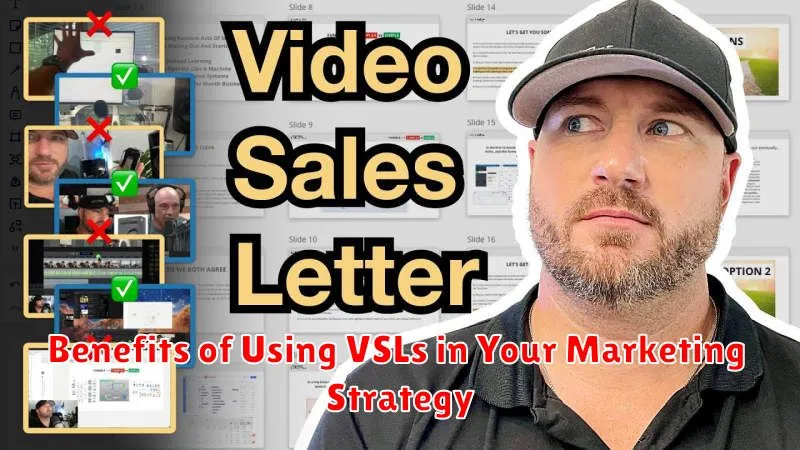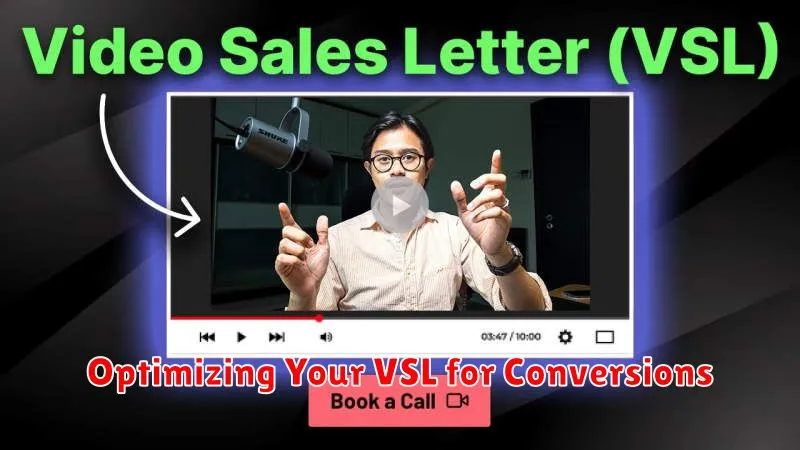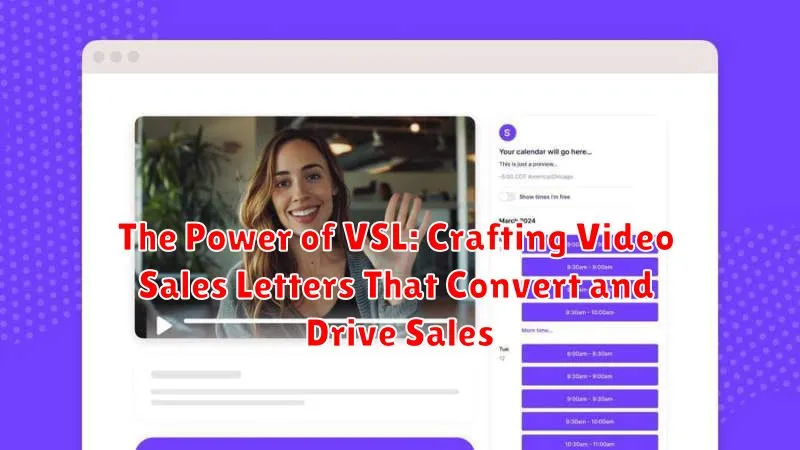In today’s digital landscape, video sales letters (VSLs) have emerged as a powerful tool for businesses seeking to boost conversions and drive sales. A well-crafted VSL can captivate your audience, effectively communicate your product’s value proposition, and ultimately persuade viewers to take action. This article will delve into the power of VSLs, outlining the key elements that contribute to their success and providing actionable strategies to create compelling video sales letters that convert and drive sales. We will explore how VSLs can outperform traditional text-based sales letters by leveraging the engaging nature of video content. Understanding the nuances of VSL creation is crucial for maximizing your marketing ROI.
From crafting a compelling script that speaks directly to your target audience’s pain points to incorporating persuasive storytelling techniques and optimizing your VSL for various platforms, this guide will provide you with the knowledge and resources necessary to harness the full potential of video sales letters. Whether you are a seasoned marketer or just beginning to explore the world of VSLs, this article will equip you with the essential tools and techniques to create high-converting video sales letters that drive sales and grow your business. Discover how to leverage the power of VSLs to engage your audience, build trust, and ultimately increase your bottom line.
Understanding the Basics of Video Sales Letters (VSL)
A Video Sales Letter (VSL) is essentially a sales letter delivered in video format. It aims to persuade viewers to purchase a product or service by highlighting its benefits and addressing potential customer pain points. Think of it as a dynamic alternative to traditional text-based sales letters, leveraging the power of visuals and audio to engage viewers more effectively.
VSLs typically follow a structured format, presenting a problem, showcasing a solution, and ultimately leading viewers towards a call to action. They often incorporate elements of storytelling, testimonials, and demonstrations to build trust and credibility.
Unlike short promotional videos, VSLs are generally longer, diving deeper into the product or service’s features and value proposition. They can range from a few minutes to over an hour depending on the complexity of the offering and target audience.
The core purpose of a VSL is to convert viewers into customers. This is achieved by providing compelling information, building rapport, and clearly outlining the steps viewers need to take to make a purchase.
Benefits of Using VSLs in Your Marketing Strategy

Video Sales Letters (VSLs) offer a dynamic approach to marketing, providing numerous advantages over traditional text-based sales letters. They offer a more engaging and personal way to connect with your target audience, leading to increased conversions and sales.
Improved Engagement and Retention: VSLs capture attention more effectively than text, leading to higher engagement and better information retention. The visual and auditory elements make the message more memorable.
Enhanced Emotional Connection: The combination of visuals, music, and storytelling allows VSLs to evoke stronger emotional responses from viewers, fostering a deeper connection with your brand and offering.
Increased Conversion Rates: By presenting information in a compelling and easily digestible format, VSLs can significantly boost conversion rates compared to static text-based sales methods.
Better Clarity and Understanding: Complex products or services can be explained more clearly through visuals and demonstrations in a VSL, simplifying the buying decision for potential customers.
Wider Reach and Accessibility: VSLs can be easily shared across various online platforms, expanding your reach and making your marketing message accessible to a broader audience.
Key Elements of a High-Converting VSL
A high-converting Video Sales Letter (VSL) hinges on several key elements working together seamlessly. A compelling opening is crucial to grab the viewer’s attention within the first few seconds. This could be a startling statistic, a provocative question, or a relatable problem statement.
Clearly defined benefits should follow, addressing the viewer’s pain points and demonstrating how the product or service offers a solution. Focus on the value proposition and what the viewer stands to gain.
Social proof builds credibility and trust. Incorporate testimonials, case studies, or demonstrations to showcase positive results. Highlighting authority through credentials or expert endorsements also strengthens the message.
A strong call to action is essential. Be clear about what you want viewers to do next, whether it’s clicking a button, visiting a website, or making a purchase. Creating a sense of urgency can encourage immediate action.
Creating a Compelling Story for Your VSL
A captivating story is the backbone of any successful VSL. It’s not enough to simply list features and benefits; you need to connect with your audience on an emotional level. This involves crafting a narrative that resonates with their pain points, aspirations, and desires.
Begin by identifying your target audience’s core problem. What keeps them up at night? What are they struggling to achieve? Once you understand their challenges, you can position your product or service as the solution.
Structure your story with a clear beginning, middle, and end. Introduce the problem, present your offering as the solution, and showcase the positive transformation your audience can expect. Use strong visuals and relatable examples to further engage your viewers and make your story memorable.
Consider incorporating elements like testimonials or case studies to add credibility and social proof to your narrative. By weaving a compelling story, you can transform your VSL from a simple sales pitch into a persuasive and engaging experience that drives conversions.
Technical Aspects of VSL Production
While a compelling narrative and strong call to action are crucial, the technical aspects of your VSL production significantly impact its effectiveness. High-quality production values convey professionalism and build trust with your audience.
Video Quality: Aim for high-definition (HD) video. A crisp, clear image enhances viewer engagement. Invest in a good quality camera and proper lighting.
Audio Quality: Clear, professional audio is paramount. Poor audio can be distracting and instantly turn viewers away. Use a high-quality microphone and ensure the audio is properly leveled and free of background noise.
Editing: A well-edited VSL maintains viewer interest. Use smooth transitions and keep the pacing dynamic to avoid monotony. Cut out any unnecessary pauses or distractions.
Graphics and Visuals: Incorporate relevant graphics, text overlays, and animations to enhance the viewing experience and highlight key information. Keep visuals clean, professional, and consistent with your brand.
Optimizing Your VSL for Conversions

A compelling VSL is only effective if it’s optimized for conversions. This involves focusing on key elements that drive viewer engagement and action.
Start strong. The first few seconds are crucial for grabbing attention. A captivating hook, whether a compelling question or a bold statement, is essential.
Highlight the benefits. Focus on what the product or service does for the viewer, addressing their pain points and demonstrating solutions.
Include a clear call to action. Tell viewers exactly what you want them to do, whether it’s clicking a button, visiting a website, or making a purchase. Make this call to action prominent and repeat it throughout the video.
Use persuasive language. Employ strong verbs and evocative language to create a sense of urgency and excitement. Benefit-driven language is key to influencing viewer behavior.
Test and refine. A/B testing different versions of your VSL—headlines, calls to action, even video thumbnails—allows you to identify what resonates best with your target audience and continuously improve conversion rates.
Distributing and Promoting Your VSL
Once your VSL is polished and ready, strategic distribution and promotion are key to maximizing its reach and impact. Consider a multi-platform approach to connect with your target audience where they are most active.
Social Media Marketing: Leverage platforms like Facebook, Instagram, and Twitter to generate buzz and drive traffic to your VSL. Targeted advertising can be particularly effective in reaching specific demographics and interests.
Email Marketing: Engage your email list by incorporating your VSL into email campaigns. A compelling subject line and concise introduction can entice recipients to click and watch.
Paid Advertising: Consider paid advertising options such as Google Ads or social media ads to expand your reach beyond your existing audience. Careful targeting ensures your budget is used efficiently.
Website Embedding: Feature your VSL prominently on your website, especially landing pages related to the product or service being promoted. This provides immediate access for visitors interested in learning more.
Measuring the Success of Your VSL Campaign
Measuring the effectiveness of your video sales letter (VSL) is crucial for optimizing its performance and maximizing your return on investment. Tracking key metrics provides valuable insights into viewer behavior and overall campaign success.
Start by monitoring your view rate, which indicates how many people started watching your VSL. A low view rate might suggest issues with your promotional efforts or the VSL’s opening. Next, pay close attention to your play rate. This metric shows how much of your VSL viewers are actually watching. Drop-off points throughout the video can highlight areas needing improvement.
Conversion rate is arguably the most critical metric. It measures how many viewers completed the desired action, whether it’s making a purchase, signing up for a webinar, or opting into an email list. A low conversion rate may indicate problems with your offer, call to action, or the VSL content itself.
Finally, track your overall ROI. This involves comparing the revenue generated by your VSL campaign to the costs associated with its creation and promotion. A positive ROI signifies a successful campaign, while a negative ROI indicates a need for adjustments.

